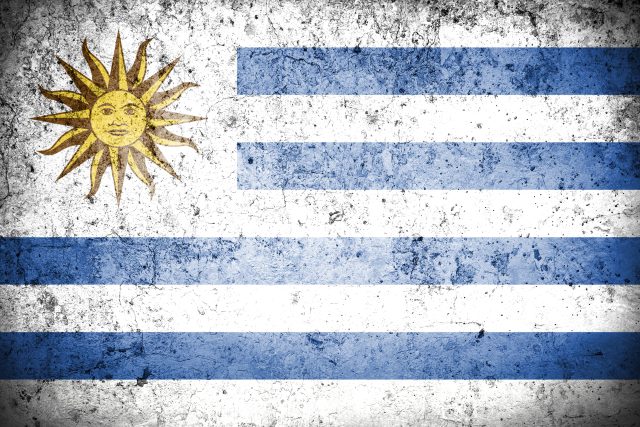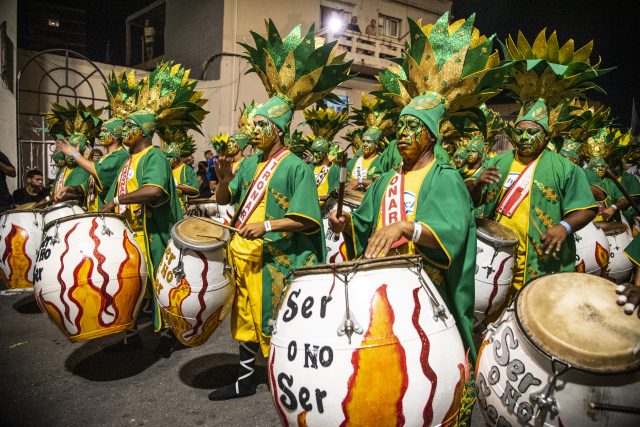This website uses cookies so that we can provide you with the best user experience possible. Cookie information is stored in your browser and performs functions such as recognising you when you return to our website and helping our team to understand which sections of the website you find most interesting and useful.
Why you should try sparkling wine from Uruguay
As consumer demand for sparkling wine continues apace, Uruguay offers some fascinating options for fizz lovers. But how do its wines compare with bubbles from other South American nations?

Subtropical Uruguay sits snugly between Argentina and Brazil in South America.
In the native Charrúan language, Uruguay means “river of the painted birds”, with “river” referencing the Rio de la Plata, a wide, brackish estuary skirting Uruguay’s southern border that empties into the Atlantic Ocean.
European immigrants are credited with bringing international grapes to Uruguay in the 18th century, including the thick-skinned Tannat variety, which was found to thrive in Uruguay’s humidity and has become the nation’s flagship wine grape.
However, a trend towards planting more white grapes like Albariño and Chardonnay means sparkling wine production has grown in recent years. Today, the country boasts nearly 162 wineries, 16 wine regions, and approximately 6,000 ha.(14,492 ac.) planted to vines.
According to IWSR, Uruguay’s sparkling wine output grew +9% between 2021-2022, with the segment expected to grow by a further +2% CAGR by 2027.
Unusual Attributes
Uruguay stands out from its South American sparkling wine counterparts for a few key reasons.
Weather, for one. The unusual confluence of river and ocean whips up bracing marine winds and dramatic diurnal shifts. This keeps wine grapes cool, locking in freshness and acidity.
Then there’s the unique terroir. Unlike rugged Argentina, Chile, and Brazil, Uruguay rarely rises above 500 metres. Moreover, most of Uruguay rests upon ancient basalt soils. In some regions, such as Maldonado near the eastern coast, vineyard owners have to use jack-hammers to break up the quartz-laced, granitic bedrock before they are able to plant vines.
Indeed, many sparkling wine producers such as Bodega Garzón and Viña Edén favour the emerging region of Maldonado for its briny, marine breezes and mineral-rich soils. This compelling combination imparts a complex, savoury flavour profile not found elsewhere.
Add Uruguay’s easy-going, beach-loving, ’carnival’ culture, and this tiny country packs a mighty punch for fizz fans.

Fiesta time
Uruguay boasts one of the world’s longest carnivals, lasting approximately 40 days. Each year between Christmas and Easter, more than two million tourists flock to the coastal resort of Punte del Este, also dubbed the “Uruguayan Riviera” to party.
“It’s high income tourism, and they always have something to celebrate,’ says Christian Wylie, managing director for Bodega Garzón, an award-winning, 200-acre estate and LEED-certified winery in Maldonado, which also features a restaurant by celebrity chef Frances Mallman.
“We have the market right there, a stone’s throw from the winery.”
Garzón launched its house sparkling wine programme in 2019, which includes a Chardonnay-dominant extra brut, and Pinot Noir-led brut rosé. “We also make a brut blanc de blancs, which is only sold in the restaurant,” says Wylie. “We refer to it as ‘The Queen.’”
Wylie cites a further boon for domestic sparkling wines, which is that tariffs on Champagne and Argentinian wine exports into Uruguay are high, meaning “we have a good price segment for locally-produced méthode champenoise.”
Garzón follows traditional methods, such as picking the grapes early to ensure lower sugar levels, blending base wines made from different parcels to add complexity, and ageing the wine for 18 months in bottle.
Additionally, Wylie points out a growing trend for ‘everyday’ bubbles, such as method charmat sparkling wines produced by Garzón’s sister winery, Bodega Brisas.
“They’re actually on fire, because they’re [the] best option out there in the market for really good quality,” says Wylie. “People use them more for everyday drinking, and it’s been a big success.”
Slice of the Market
What’s driving this growth? The answer is twofold; robust local consumption, and a thirsty neighbour.
Uruguay consumes 98% of its sparkling locally, with Brazil drinking most of the remaining balance (followed by the US, Japan, UK, and Sweden).
“Garzón is a very aspirational brand in Brazil, and is an incredible success,” confirms Wylie. Interestingly, Brazil’s 2021-2022 volumes increased +10%, with forecasted CAGR volumes for 2022-2027 up 6%.
But how does the Uruguayan sparkling wine industry match up to that of other South American nations?
Brazilians consume 99% of Brazil-made bubbles locally, and generally speaking producers do not export the product. “We have a long tradition of sparkling wine production, that goes back to the beginning of the 1900s,” says Flavio Pizzato, who produces traditional method sparkling wine at his eponymous Pizzato Winery in Serra Gaúcha.
By contrast, Argentina increased its sparkling production by +5% between 2021-2022, and is expected to grow this by a further +4% by 2027 by growing its presence in existing major exports Brazil and Uruguay, as well as pursuing new markets. “Argentinian sparkling wines are beginning to make a mark in the US and UK markets due to their quality, variety, and excellent value for money,” explains Veronica Kathuria, Wines of Argentina US & Canada Area Manager.
In Chile, sparkling wine volumes grew by an even greater +8% between 2021-2022, with forecasted CAGR volumes expected to climb by a further +4% by 2027. Chile consumes only 69% of its domestically-made bubbles, exporting the rest. Among best-selling exports to Japan, Colombia, US, and the UK are sparkling wines from Chilean producers Emiliana, La Ronciere and Miguel Torres; particularly Emiliana’s organic ‘Amaluna’ brut from Valle Casablanca, La Ronciere’s ‘Selva Oscura’ extra brut from Valle del Malleco, and Miguel Torres ‘Estelado’ Fair Trade Pais brut rosé.
Ultimately, Uruguay’s secret to success centres around flavour, finesse, and affordability.
“There are no secrets, but there are a few mysteries in wine,” Wylie concludes. “Especially in sparkling.”

